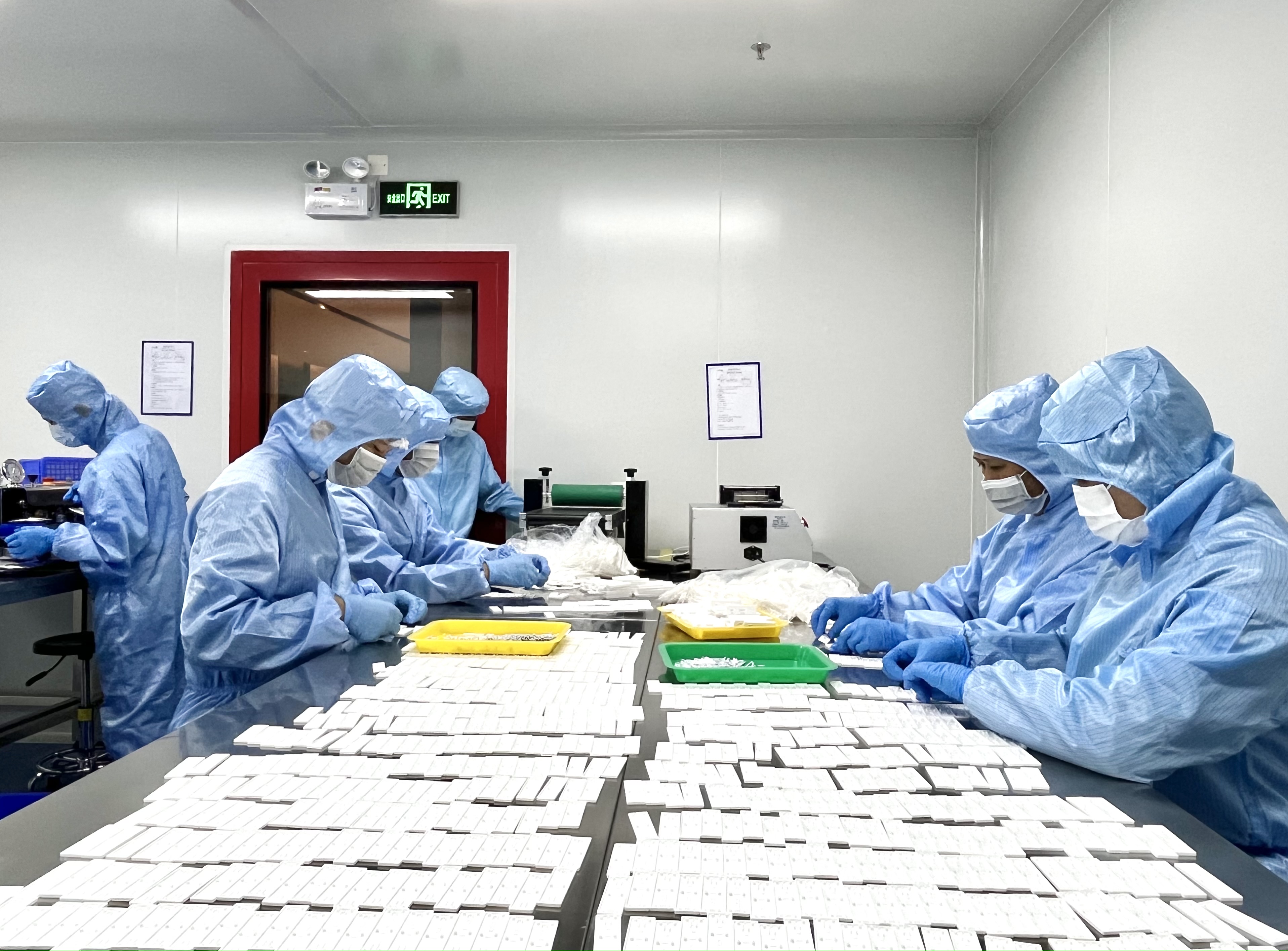Aseptic Clean Room Requirements for IVD Testing
Introduction:
When conducting aseptic inspections and microbial limit tests, operating within a strictly controlled environment for microbial contamination is crucial. The sterility of this environment directly influences the accuracy of aseptic inspections. To ensure the stability of the clean room environment and the reliability of inspection results, implementing appropriate control measures and assessment methods is imperative. Compliance with relevant standards, including cleanliness levels and local cleanliness requirements, is essential for maintaining quality.

Clean Room Specifications:
1.Environmental Quality: Adequate lighting, ventilation, and humidity control are essential for a clean room. It should also be situated away from potential contamination sources such as restrooms.
2.Structural Design: Typically, clean rooms should not exceed 10 square meters in area, with a height limit of 2.4 meters. They usually consist of buffer and operating rooms, with the former acting as a transition space and the latter for conducting tests. A sample transfer box should be present between these rooms to maintain aseptic conditions.
3.Equipment Requirements: Clean rooms must be equipped with unidirectional airflow systems featuring air sterilization filtration. The operating area should achieve cleanliness level 100 or equivalent, either through the workspace or with a super clean workbench. Additionally, the room should have disinfection devices such as ultraviolet lamps to ensure air quality.
Conclusion:
Maintaining a suitable clean room environment is essential for accurate IVD testing. By adhering to stringent cleanliness standards and implementing proper control measures, the reliability of test results can be ensured.
Specialized Rooms for Biomedical Quality Assurance:
Discover how Microbial Examination Room, Positive Control Room, and Aseptic Examination Room contribute to quality assurance and safety in biomedical industries:
Microbial Examination Room:
Purpose: Ensure product safety and quality by analyzing microbial content in samples.
Functions: Conduct tests to detect and quantify microorganisms, supporting rigorous quality control measures.
Positive Control Room:
Purpose: Validate test results and assess sterilization efficacy through controlled experiments.
Functions: Serve as a reference for evaluating the performance of sterilization processes by intentionally introducing microorganisms into samples.
Aseptic Examination Room:
Purpose: Maintain sterile conditions for aseptic inspections and microbial limit testing.
Functions: Provide a contamination-free environment for conducting tests with precision and accuracy, essential for meeting regulatory standards.
Optimize your biomedical facility's operations with these specialized rooms designed for meticulous testing and quality assurance.
Related Immunoassays
- Cardiac Markers
-
Tumor Marker
-
PGII
-
G17
- CA50
-
CA125
- CA242
-
CA15-3
- CA19-9
- CA72-4
-
Pepsinogens I (PGI)
-
Human Epididymis 4 (HE4)
- Prostate-Specific Antigen (PSA)
- Squamous Cell Carcinoma (SCC)
- Neuron-Specific Enolase (NSE)
- Cytokeratin 19 Fragment (CYFRA21-1)
- Human Progastrin-releasing Peptide (ProGRP Tumor Marker)
- Protein Induced by Vitamin K Absence or Antagonist-II (PIVKA II Tumor Marker)
- Alpha-fetoprotein(AFP)
-
CEA
-
Human Chitinase 3-like 1
-
PGII
- Inflammatory Marker
- Infectious Disease
- Hormones
- Thyroid Function
- Glucose Metabolism
- Bone Marker
- Others
-
Heterophilic Blocking Reagent
- Animal Diagnostics

















